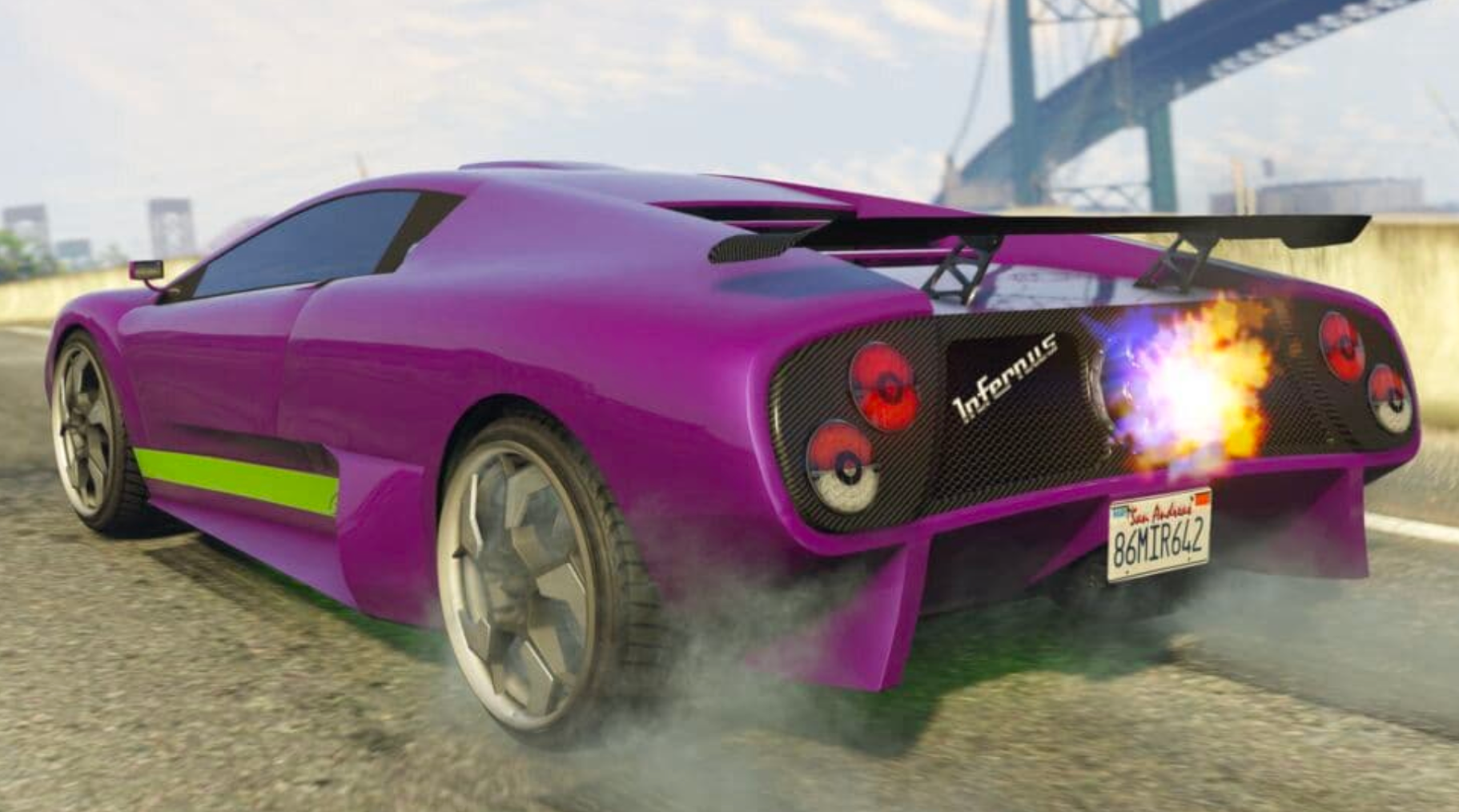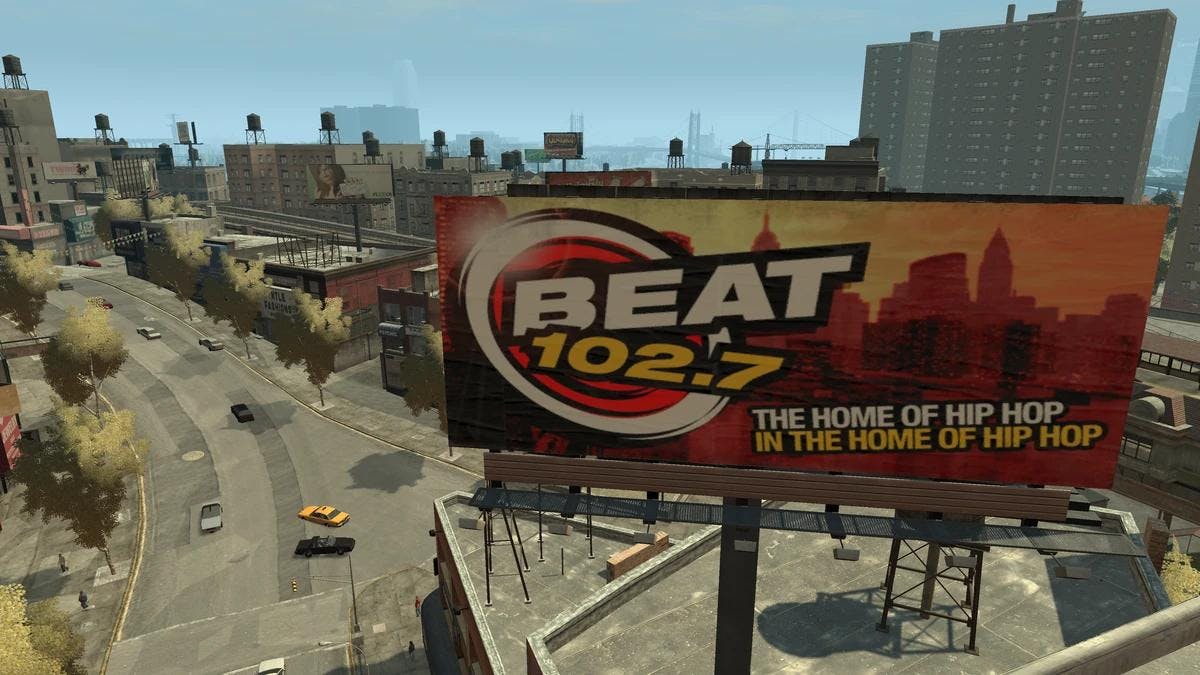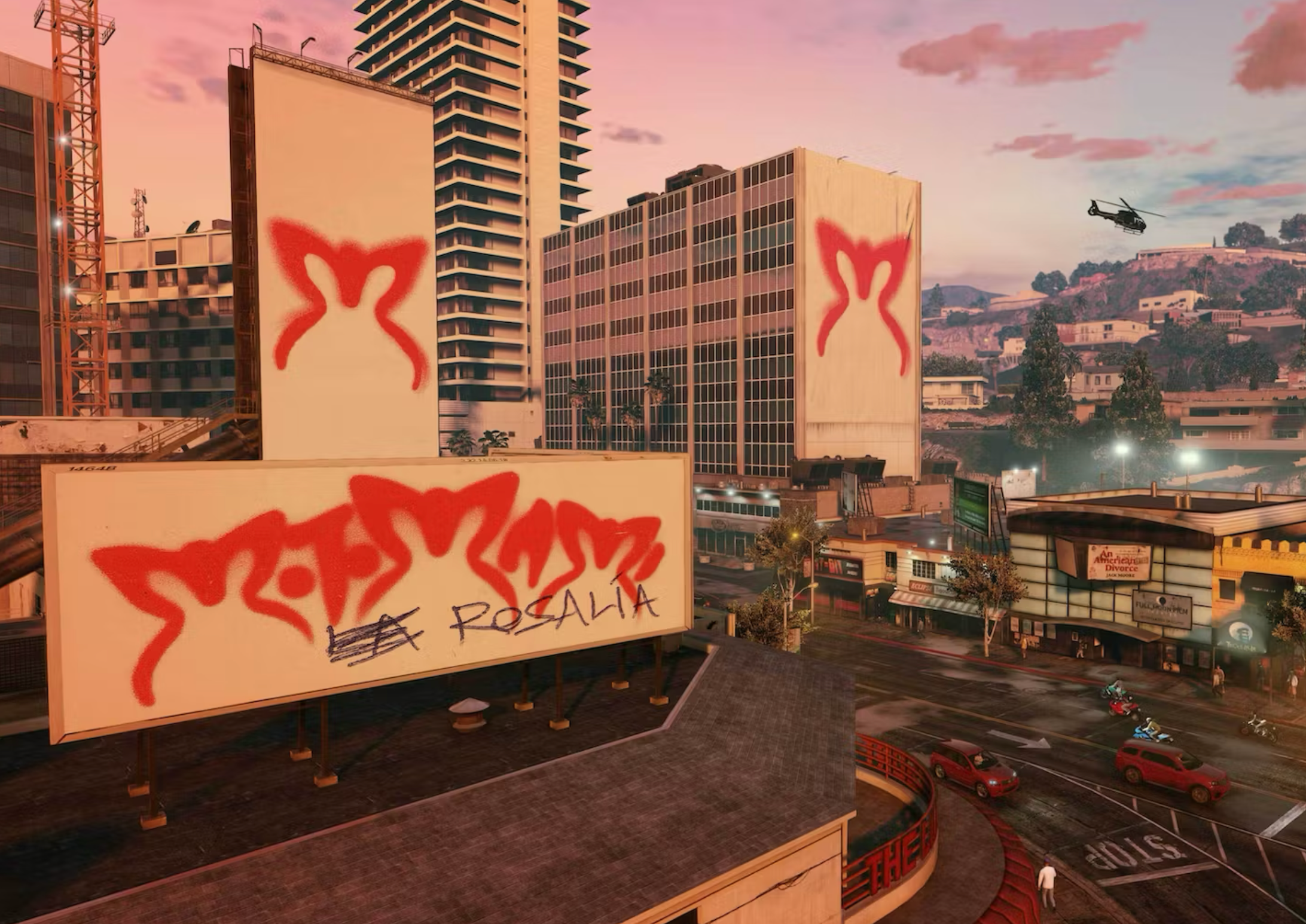The first in a series of Liner Notes stories honoring various radio projects. CW: This piece is rated M for mature audiences only.
Sure, everyone remembers the Flock of Seagulls TV spot of 2002.
A year had passed since the release of Grand Theft Auto III, which itself sounded a little like the Sangraal when you first heard about it at school: there’s a video game where there’s only one level, and it’s a whole city, and you can do whatever you want in it or to it. My parents forbade GTA in their house, but they couldn’t exactly stop me going over to my uncle’s place to conduct research after baseball practice, research made possible by an older cousin with a TV in his room. I learned you could do whatever you wanted, but if you did too much of it, SWAT trucks and then bonafide army tanks could show up to neutralize you. I never owned the game myself but when I could get a little time to play, my sole purpose became to draw out those tanks — “Rhino” tanks, billed by the GTA Wiki as “60 tons of fun” — so I could steal one and then drive it squarely across faux-Hell Gate bridge during rush hour, blowing everything up along the way. (Grand Theft Auto’s Liberty City was a New York facsimile; though truthfully, its drabness made it feel a little more like DC to me.) I was 11, and impetuous, and my concerns were global.

The World Cup was all over TV that summer, and a few discrete memories stick in the mind from that time. After David Beckham’s frosted tips, and Ronaldinho lobbing David Seaman from the halfway line in the Brazil-England semifinal, I remember “I Ran” by Flock of Seagulls cutting through whatever I was doing wherever else in the house, calling me back to press my nose against the screen to see the new Grand Theft Auto commercial. Rockstar Games executives, in interviews and retrospectives, mark this as a cultural reset, but the idea of a “cultural reset” didn’t exist at the time. I just really wanted to play the game or, more accurately, I didn’t want to be left behind. Lyrics about the Aurora Borealis penned by hair bands from the 80s are both a dime a dozen, but had either ever felt so viscerally right as they did in this setting? I’d never seen a sprawling virtual landscape textured with Miami’s tawny sunsets and apparent humidity. Watching Tommy Vercetti’s sleeves billow in the South Beach breeze as he banked through an intersection leaving burnout marks behind, I thought, I would like to go there. Surely this is all anyone would be talking about in the hallway between classes.

The first two GTA installments in the series were top-scrolling PC games soundtracked by MIDI music that only flirted with genre, just enough to be sorted into radio stations. The sound design for 2001’s GTA III, according to then-COO of Rockstar Terry Donovan, was approached as if it were a movie. In practice, this meant employing real-world drivetime radio personalities such as DJ Stretch Armstrong and Lord Sear to make stations distinct, building out what became an entirely parallel world by the release of 2002’s Vice City. To begin with, the game is set in 1986 “Miami,” but specifically the version of post-Mariel boatlift Miami imagined by Michael Mann in the TV thriller Miami Vice. From style to execution the game owes a lot to the show, which found a national audience at a time when the medium was overrun by well-lit ensembles and sitcoms. By out-edging the norms of the era, for one, but also by spending upwards of $15,000 on original music per episode. Come for the shootouts and the taco meat on Philip Michael Thomas’ glistening chest, stay for an era-defining Phil Collins drop: audiences tuned in to see sexy men behaving badly but also for the possible thrill of hearing those drums on “In The Air Tonight” for the first time. Vice City used licensed music in a similar fashion, introducing an entirely new generation to the likes of The Buggles or Kate Bush, and washing it down with hilarious radio spots, like fictional football player BJ Armstrong doing a proto-Nugenix commercial. Break your own leg for fun to prove your toughness! Have 18 kids like me!
I should say that I never got to visit Vice City on a PS2, but I did eventually get there on a homebrewed PSP, playing 2006’s Vice City Stories. I couldn’t give you a single story beat, but the feelings are clear: weaving in and out of traffic on a PCG bike while listening to the other Flock of Seagulls hit, “Space Age Love Song,” on Nonstop FM before smacking face first into the back of an 18-wheeler and getting an instant “WASTED” message across the screen. If you’ve played you understand. If you haven’t, then let me share that it’s a common affliction: ask anyone what they remember about GTA and it probably won’t be a mission, or a character, but an absurd moment of synchronicity that couldn’t have occurred anywhere else.
Take the game engine quirk in 2008’s GTA IV: once you steal a car and start driving around, that same car model clones itself, populating the roads as you enter other parts of town. I was usually on the hunt for Infernuses, a sort of Lamborghini Aventador with flame exhaust, and I could find them near the business district, which is all apartment buildings with marble lobbies, high street shopping, and people in suits talking loudly on cell phones. I always felt a bit of stick-that-up-you vindication when I pinched one, and I would do it exactly like Cleo, played by Queen Latifah, in the film Set It Off: the slim jim, then the hotwire, then the alarm, and finally, a pause to assess what’s in the tape deck because the car doesn’t move until the music isn’t trash. I’d feel satisfied, from a geometric perspective, when Kanye West’s “Flashing Lights” was playing on The Beat 102.7, and I could cruise down main street in my Infernus watching ever more Infernuses pop into view, like ducks in a row. Sometimes this ended in a deadly standoff with the police, also like Cleo in Set It Off.
So much of Grand Theft Auto really does come down to driving around and then switching cars to drive around some more. In-game radio soundtracks the roadways with occasional moments of real history: Julio G, a real DJ from Lynwood, hosted Radio Los Santos in 2004’s San Andreas, set in early 90s Los Angeles. You can cruise the streets and listen to G introduce Ice Cube’s “No Vaseline” as if Cube had just split with N.W.A., airing out Eazy E and MC Ren during a live broadcast. On the series’ return to Los Angeles in 2013’s GTA V, Big Boy hosts the city’s main rap station just like he does in his actual life — first at Power 106, now with Real 92.3.

GTA V has the most licensed music in a single entry to date at 441 songs across 16 radio stations — players have listened to over 75 billion minutes of in-game music. The game has shows held down by the likes of Frank Ocean, Danny Brown and Skepta, and original music from Tyler, The Creator, ASAP Rocky, Freddie Gibbs, and more. Consistent and grander updates have kept things current in the decade (!) since its release, adding more music, new stations, and even performers at live venues. There’s an exclusive-access spot beneath the Casino called The Music Locker, and for a while, the godfather of Detroit techno Moodymann was doing a show there. The set is up in full on YouTube, and I recommend it: the show starts with the Brian Jackson version of Gil-Scott Heron’s “We Almost Lost Detroit,” which is not currently on any streaming service. I’ve looked.
I was never able to sell my best friend from grade school on going to The Music Locker; he lives across the country but we stay in touch by pulling heists online sometimes. To my recollection we ended up selling meth instead, which of course, is an option in GTA. When he arrived to pick me up, in the wrong lane of traffic, he was wearing an alien gimp suit and blaring “El Sonidito” by the Hechizeros Band, which a growing part of the internet now understands as “GTA Taxi Music” or simply, “The Mexican Beep Song.” If I’m honest, I think it’s replaced Boots Randolph’s “Yakety Sax” as my cultural shorthand for comedic failure. It recalls images of cars flipping end over end, and bodies sailing through windshields onto crowded streets.
And I mean I like to laugh, but I got in his car and turned that shit off immediately.



